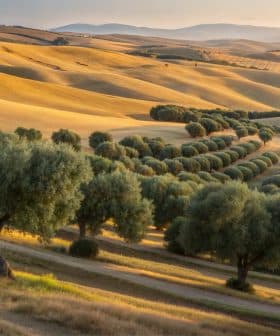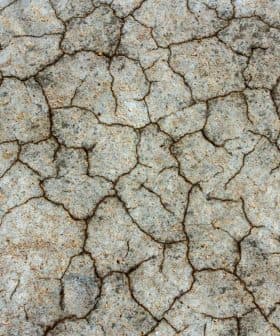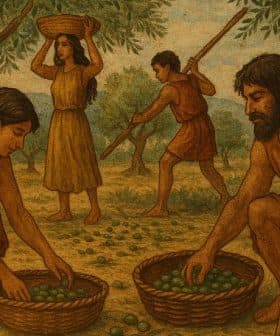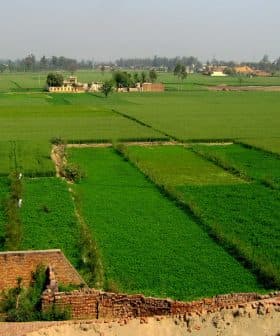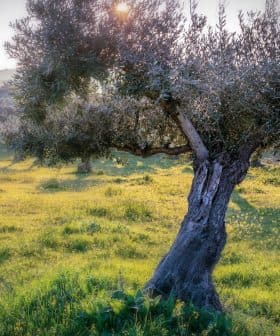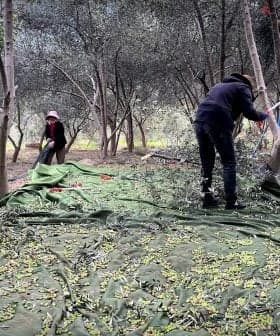Argentina Likely to Host Olive Council's Fourth Olive Germplasm Bank
Argentina is working towards becoming a world olive germplasm bank within the International Olive Council network, which would benefit olive farming investments in the country and continent. The Argentine institution is currently the largest olive collection in the Americas and plays a crucial role in protecting genetic resources, promoting biodiversity, and supporting research and farming efforts.
Argentina’s national olive germplasm bank is one step closer to assuming the status of a world olive germplasm bank within the network established by the International Olive Council (IOC).
Such a global institution, a first for South America, would facilitate and speed up olive farming investments in the country and the continent, its promoters said during a series of meetings in Argentina between IOC delegates and local authorities.
Germplasm banks play a pivotal role in protecting the genetic integrity of olive cultivars and promoting biodiversity while also supporting research and farming.
Today, a network of 20 national olive germplasm banks is affiliated with the IOC network, which is also connected to the three current international banks located in Córdoba, Spain, Marrakech, Morocco, and Izmir, Turkey.
See Also:Researchers Work to Identify Olive Varieties Best Adapted to Higher TemperaturesWith its olive tree cultivars, laboratories, greenhouses, fields and specialized experts, the Argentine institution is a candidate for the fourth such world olive germplasm institution.
The Argentine bank includes three nuclei of different ages, genetics and typology, covering 15 hectares. It holds more than 100 olive varieties currently grown for olive oil and table olives.
“It is the largest and most important olive collection in the Americas,” Carlos A Parera, national director of the National Institute of Agricultural Technology (INTA), told Olive Oil Times.
Parera noted how the bank also hosts almost 200 accessions representative of the Mediterranean basin, with more than 1,000 trees.
The original nucleus of the bank, called “Dante Floreal Marsico,” was created by the National Olive Growing Corporation at the end of the 1940s.
“It was part of the National Network of Experimental Variety Trials,” Parera said. “Its main objective was to carry out experimentation and research tasks aimed at analyzing the ecological and economic suitability of the different olive growing areas in Argentina.”
Today, this nucleus expands on six hectares. “These olive trees have been planted in our province for almost a century, which constitutes a true legacy for our country since the tie between these ancestral olive trees and the territory is extremely close,” Parera said.
In 2015, Argentine experts and researchers began to expand the institutional germplasm bank, the nucleus known as “INTA Expone,” and added new varieties not present in the original nucleus to an area of about half a hectare.
“In 2019, the expansion tasks went on, incorporating new varieties in a more intensive planting system, to continue incorporating and evaluating the largest possible number of olive varieties from all olive-growing countries throughout the world,” Parera said. Today, this nucleus expands over an area of eight hectares.
Parera also emphasized how in that same year, 2018, the national olive collection was declared a cultural and natural heritage of the San Juan province. That province, located in the mid-western part of the country, is one of Argentina’s most relevant olive-producing areas.
The promoters of establishing the fourth IOC world germplasm bank in Argentina emphasized the significant role that it could play at a time that is increasingly challenging for olive farmers due to climate change.
In this context, Parera said the distance from the other banks and the expansion of olive growing might require a new institution in the Western Hemisphere to benefit all of the countries in the region.
“In this sense, Argentina olive growing, as in many other countries of the Southern Hemisphere, develops within environments subject to different temperatures and rainfall patterns than those of the Mediterranean, which leads to the assumption of a differential agronomic and physiological behavior in these new growing areas,” Parera said.
According to INTA, in such a scenario, genetic resources must be protected and new studies undertaken “to systematically evaluate the phenotypic plasticity of existing cultivars in our country and potential new olive genotypes or varieties,” Parera said.
“This will allow us to determine the most resilient olive tree varieties,” he added. “Thus, both the technical and productive sectors need to begin to revalue this olive growing heritage and reflect on various aspects of the crop, such as adaptability to new regions, distinctive management and use of diverse resources, water, for example, production and differentiated marketing of products.”
The talks between the IOC and the local authorities have also confirmed that the local olive cultivar, Arauco, will be included in the next update to the World Catalog of Olive Varieties.
Until the late 1990s, Arauco has been the country’s most widely farmed olive cultivar because of its high oil content and high polyphenolic composition.
“Arauco has profitable characteristics for commercial production of virgin olive oils, especially because it has a well-balanced fatty acid composition and a high content of antioxidant compounds,” Parera said. “Our germplasm bank has the only national collection of Arauco, with several clones of this cultivar.”
Arauco is also the main cultivar that has to be present in extra virgin olive oil produced in the province of Mendoza to fall under the provisions of the first Protected Geographical Indication (PGI) attributed to an Argentine oil.
During their talks, the IOC and the Argentine authorities also discussed adopting the IOC definitions for olive oil in the Mercosur, a common market area comprising Argentina, Brazil, Paraguay and Uruguay.
The IOC also plans to make Argentina the host for the Southern Hemisphere edition of its Mario Solinas olive oil yearly contest.
In those meetings, INTA said olive growing in Argentina has changed over the years, as farmers increasingly have added modern groves to traditional ones.
“These new olive groves result from large investments, which means that the average plantation area of each farm is extensive,” Parera said. “Such olive plantations are developed, to a large extent, under the concepts of mechanization, fertilization and measured and controlled provision of irrigation water, few varieties, among other aspects.”
According to IOC data, Argentina has seen its olive oil production significantly grow in the latest decade. The average production from 2011/12 to 2021/22 reached 32,000 tons, compared with the 17,700 tons recorded in the previous decade.
“The future success of this activity will depend on maintaining these two sectors, increasing production and domestic olive oil consumption,” Parera said. “A strategic vision that aims to maintain the productive bases, but capable of responding adequately to new challenges such as climate change, water scarcity, emerging diseases, sustainability, better working conditions and product quality, among others.”
In this regard, it is important to highlight the tasks of conservation and valorization of the genetic resources of olive cultivation,” he added. “In an agriculture with dramatic global changes, having a broad varietal spectrum allows us to respond quickly and efficiently to such changes.”


